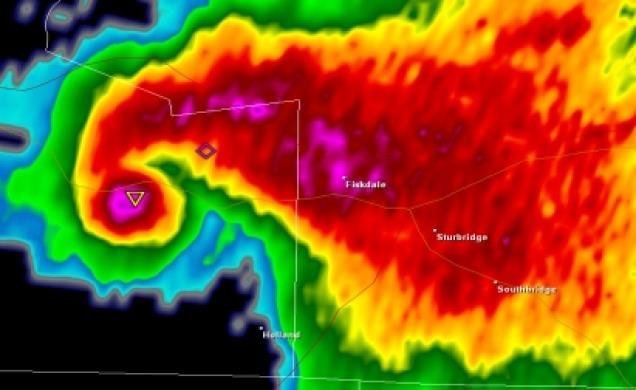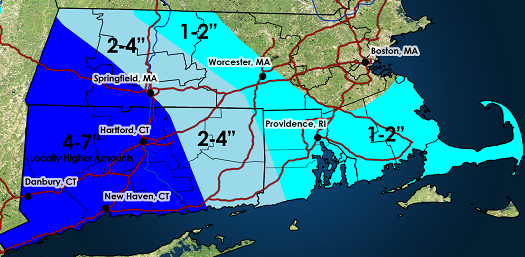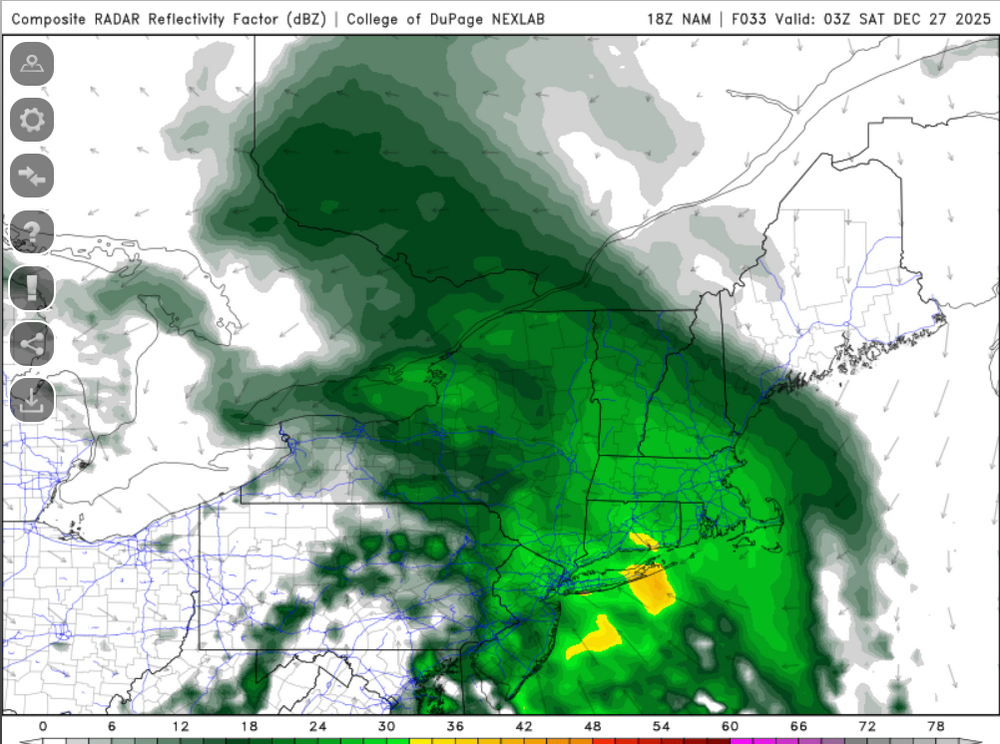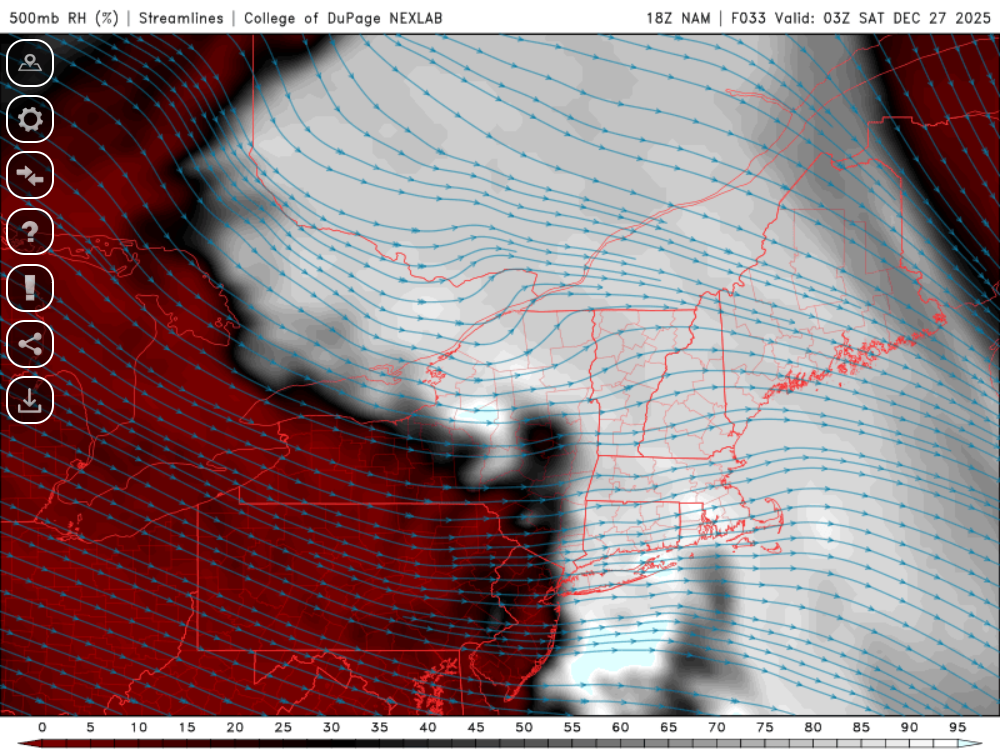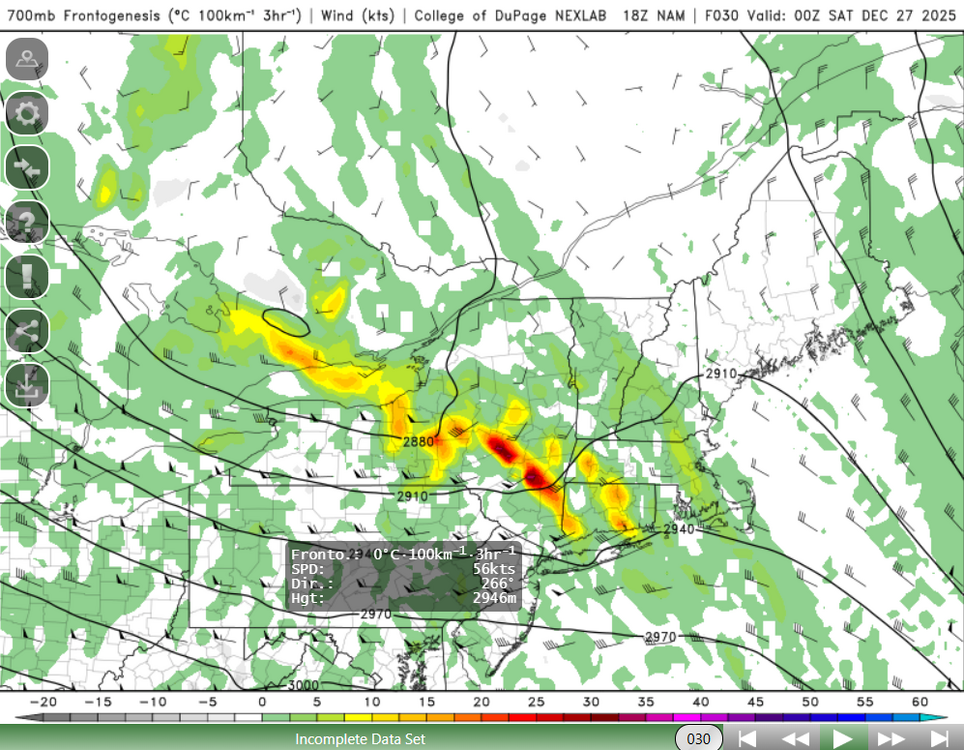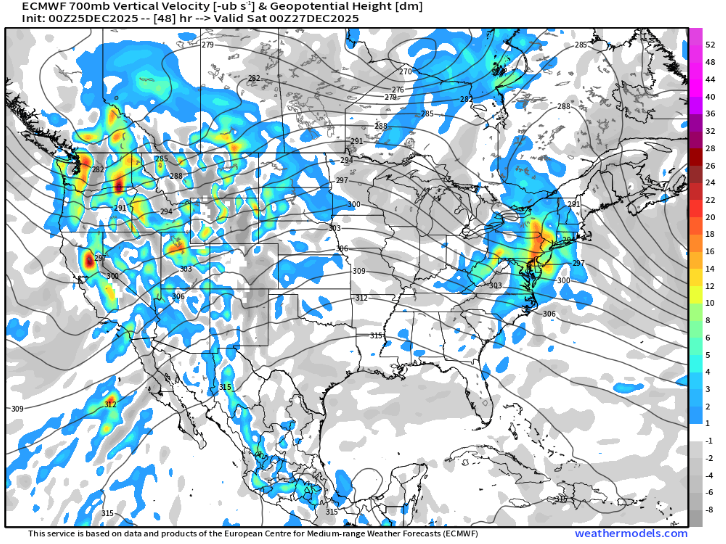-
Posts
78,551 -
Joined
-
Last visited
Content Type
Profiles
Blogs
Forums
American Weather
Media Demo
Store
Gallery
Everything posted by weatherwiz
-

26th-27th event, coming at us like a wounded duck.
weatherwiz replied to Go Kart Mozart's topic in New England
Once the storm passes -

26th-27th event, coming at us like a wounded duck.
weatherwiz replied to Go Kart Mozart's topic in New England
We have very similar thoughts on this. But you’ve been consistent since multiple days ago…took me a few days to catch on -

26th-27th event, coming at us like a wounded duck.
weatherwiz replied to Go Kart Mozart's topic in New England
Updated map and even a blog post https://weatherwiz.blogspot.com/2025/12/friday-december-26-2025-southern-new.html -

26th-27th event, coming at us like a wounded duck.
weatherwiz replied to Go Kart Mozart's topic in New England
It's very possible. If there is any setup that the NAM is going to outperform other guidance it is going to be this. The globals aren't particularly skillful when it comes to banding. In terms of other mesos, I don't even think the HRRR handles that well. The best thing I think to do is forget QPF amounts and QPF trends and using those to define the storm trends. The focus and assessment should be on the mid-levels and particularly that mid-level warm front. Often, models will produce the heaviest QPF right under directly under where the best dynamics or fronto or gradient is but more time than not the heaviest QPF is going to be displaced a bit north of this. -

26th-27th event, coming at us like a wounded duck.
weatherwiz replied to Go Kart Mozart's topic in New England
If you look at where models (NAM, GFS, Euro) have the 700mb warm front...the NAM actually I think makes sense with how far north and east it has the banding. I think the area of strongest frontogenesis on the 12z RGEM would be northeast of where it has it -

26th-27th event, coming at us like a wounded duck.
weatherwiz replied to Go Kart Mozart's topic in New England
do you know how well historically the RGEM handles banding? -

26th-27th event, coming at us like a wounded duck.
weatherwiz replied to Go Kart Mozart's topic in New England
I am so torn on this. Dry air races in aloft. Here is simulated reflectivity for 3z. I choose this over QPF because that's 3hr QPF up until that hour. anyways...looks pretty good but look at 500mb RH (80-85% but dropping quickly) This heavy snow is going to be so brief and I have to suspect this will have some impact on ratios, except for directly under the banding. You could see something like Danbury get 7" and Waterbury barely 3" (just using those two locations to illustrate the tight gradient) -

26th-27th event, coming at us like a wounded duck.
weatherwiz replied to Go Kart Mozart's topic in New England
-

26th-27th event, coming at us like a wounded duck.
weatherwiz replied to Go Kart Mozart's topic in New England
Not sure. I usually don't really look around at maps until I've made one...unless I don't feel like making one lol. -

26th-27th event, coming at us like a wounded duck.
weatherwiz replied to Go Kart Mozart's topic in New England
Time to work on an updated snow map -

26th-27th event, coming at us like a wounded duck.
weatherwiz replied to Go Kart Mozart's topic in New England
Interesting...advisory for Hartford County -

26th-27th event, coming at us like a wounded duck.
weatherwiz replied to Go Kart Mozart's topic in New England
snow ratios are definitely going to be hefty under the banding...certainly upwards of 15:1, if not maybe even upwards of 18:1. Certainly leading to some potential that could even some 8-12" totals, even with the speed. The 10-15" I don't know about...those models were also pegging snowfall rates4-5"/hour. If that happened then we would see those totals I think but 4-5"/hr might be a bit high -

26th-27th event, coming at us like a wounded duck.
weatherwiz replied to Go Kart Mozart's topic in New England
Hopefully when you flush your phone goes down with it -

26th-27th event, coming at us like a wounded duck.
weatherwiz replied to Go Kart Mozart's topic in New England
The good news is I think everyone here who is in line to potentially be impacted by the band has realistic expectations. I think there is solid agreement on the max swath somewhere in the 4-8/6-10 range. -

26th-27th event, coming at us like a wounded duck.
weatherwiz replied to Go Kart Mozart's topic in New England
I would do it right at the table. Hell, I may bring my laptop and an additional monitor and toss the food onto the floor and setup shop on the table -

26th-27th event, coming at us like a wounded duck.
weatherwiz replied to Go Kart Mozart's topic in New England
Weakens a bit crossing CT but this would lead to a helluva dump. It just sucks this is going to be in and out. But I am feeling confident much of the state will get 4-8 inches. My map yesterday looks very stupid now. I think the ranges with this will have to be a bit larger than usual because of the cutoff that will occur -

26th-27th event, coming at us like a wounded duck.
weatherwiz replied to Go Kart Mozart's topic in New England
Euro may be a bit more northeast too...tough to tell but regardless looks pretty solid for much of CT with a quick glance -

26th-27th event, coming at us like a wounded duck.
weatherwiz replied to Go Kart Mozart's topic in New England
No disagreement there. The uncertainty is definitely there, particularly moving northeast of Fairfield County. Here is HREF probability for 1"+ per hour rates. Right on the border getting into Hartford and eastern half of New Haven County. I guess it may just come down to how confident the forecaster is in meeting warning criteria. -

26th-27th event, coming at us like a wounded duck.
weatherwiz replied to Go Kart Mozart's topic in New England
We should saturate quickly but this will be a concern along the fringes of the precipitation shield. The bigger concern with dry air IMO is how quickly does dry air filter in aloft...that is going to cut down the banding very quickly. This is one of the reasons I think its just a 3 hour or so period of very heavy snowfall and why I think max totals will be 6-8" versus something like 9-10" or 9-12" -

26th-27th event, coming at us like a wounded duck.
weatherwiz replied to Go Kart Mozart's topic in New England
I'm also factoring in holiday travel. Winter Storm Watches certainly raises awareness but you figure alot of people will probably be wanting to adjust plans today. In a normal scenario I think it would be watches then warnings tonight but holiday travel may factor into the decision making. -

26th-27th event, coming at us like a wounded duck.
weatherwiz replied to Go Kart Mozart's topic in New England
Depending on how the euro swings, I wonder if we could even go straight to Winter Storm Warnings -

26th-27th event, coming at us like a wounded duck.
weatherwiz replied to Go Kart Mozart's topic in New England
I would certainly hold off traveling Saturday morning, where to in PA? -

26th-27th event, coming at us like a wounded duck.
weatherwiz replied to Go Kart Mozart's topic in New England
any changes/adjustments would mostly likely come with the afternoon package and I doubt any significant changes would be made until after assessing the Euro too. This is a very delicate situation, we've been burned before shooting the moon with these amped solutions only for things to trend down a bit as we got closer. The trends have been great for our region, but there are still lots of uncertainties and flags to consider, particularly when determining what and where the max swath will be. This is probably something we can't even pin down until nowcasting time. @Sey-Mour Snow thoughts several posts up I think sum this up extremely well with a sharp cutoff away from the strip -

26th-27th event, coming at us like a wounded duck.
weatherwiz replied to Go Kart Mozart's topic in New England
meh get your shit together -

26th-27th event, coming at us like a wounded duck.
weatherwiz replied to Go Kart Mozart's topic in New England
these certainly typically have two max areas. I like your idea of BGM to BDR for the main max zone. Hell, you can even see that on the GFS too

